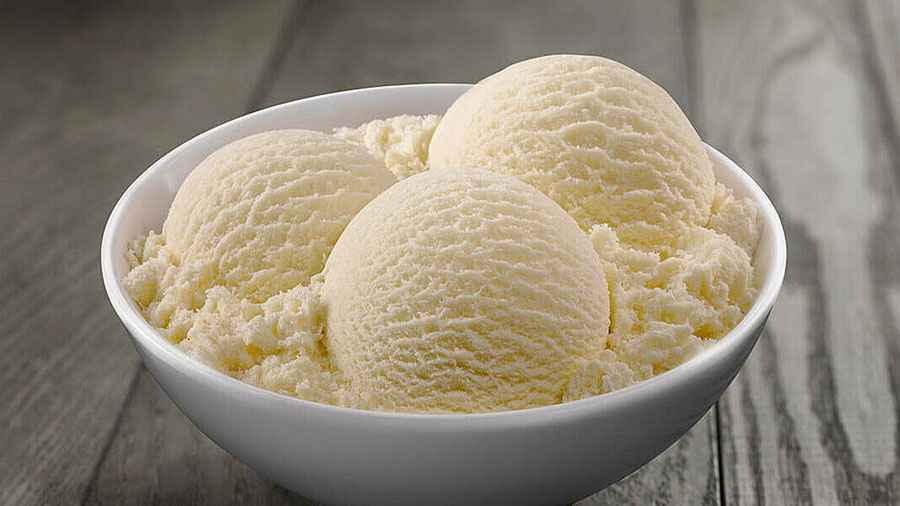
Vanilla Ice Cream and Dissertations
July 23rd is National Vanilla Ice Cream Day. You can celebrate by forgetting the fudge sauce, whipped cream, sprinkles, and a la mode, from your ice cream and your dissertation…
I prefer chocolate. My son, cookies-and-cream. My daughter, mint chocolate chip. And, my other whatever she can get. Everyone has their favorite, but today is the day we pay homage to vanilla.
Plain vanilla. The lowest of flavors on the ice cream totem pole. Does anyone really eat vanilla ice cream without sauce, a myriad of mix-ins, or a side of brownie or apple pie?
Well, you should try it sometime. Yes, it’s simply. Yes, it’s plain vanilla. But, it’s also delicious!
What’s wrong with simply and uncomplicated, anyway? — I say “nothing,” when it comes to ice cream, and doubly so when it comes to dissertations.
I written before about how I advise by students to approach their dissertations. It’s a job, a task, a graduation requirement. It should not be approached as your hobby, an opportunity to learn something new, or your legacy.
Rather, you should keep it simple. Figure out what your committee expects of you, and give them just that. No extra research questions. No extra interviews. No extra analyses. No hot fudge sauce. No whipped cream. And, no cherry on top!
When you keep your dissertation plain vanilla, there is less for your committee to question. Less to which they may object. Your committee sees cookie-cutter, plain-vanilla dissertations all of the time. They don’t send up warning flags. They don’t cause a stir.
“How do I keep my dissertation plain vanilla?” I’ve talked about this before here, here, and here.
My number one piece of advice for keeping your dissertation plain vanilla?
Stir clear of mixed methods. Quantitative methods can be a scoop of vanilla. Qualitative methods can be a scoop of vanilla. But, a mixed-methods dissertation is at least a double-scoop banana-split sundae with fudge sauce, sprinkles, whipped cream, nuts, and a cherry on top.
At bit less figuratively, a mixed-methods study requires a double-length Chapter 3, a double-length Chapter 4, a nearly double-length Chapter 5, and extra discussion in Chapters 1 & 2. It’s not quite two dissertations in terms of the final paper, but close enough. And, in terms of the complexity, work, time, and effort required it could be two or more dissertation’s worth!
My second best piece of advice for a plain-vanilla dissertation?
Use a quantitative approach. Although the difference between quantitative and qualitative isn’t as pronounced as the difference with mixed methods, the former is certainly a heck of a lot less work!
There are a few ways to complete both qualitative and quantitative studies. But, by far the most popular are interviews and surveys, respectively.
A typical qualitative project may require 15 – 30 interviews. First, you have to recruit 15 – 30 people (who fit your design requirements) for the relatively large favor of meeting you one-on-one and sharing their experiences with you in a decidedly non-anonymous way. Once you have recruited your participants, you have to schedule and conduct your interviews.
Our students report that conducting a single academic interview takes about three-to-four hours out of their day. First you have to get yourself to a neutral site for the interview. Libraries, bookstores, and coffee shops are popular choices. You want some privacy for the interview, but not too much privacy — you never which of your subjects may be an ax murderer, right? 🙂
You arrive early to ensure that you get there before your subject. You also have to choose a table or corner and set up your station for taking notes, recording, etc. Next, your subject arrives. There’s a bit of glad-handing and small talk to build rapport. Finally, the interview itself will likely run about an hour. After that, there’s a bit more small talk; you thank your subject and say good-bye. Finally, you pack up and travel to whenever you have to go to get back to your regular life — be that home, the gym, the grocery store, or somewhere else.
Three-to-fours hours from start to finish. And, since it’s likely that both you and your subject work for a living, you will be conducting these interviews at night or over the weekend.
When you spend an entire evening interviewing a subject for your dissertation, you are not about to do the things you would normally do during your “off time.” Perhaps that’s laundry or grocery shopping or mowing the grass…or just relaxing and unwinding! Whatever it is, students report feeling jet lagged for days after conducting an interview.
This jet-lagged feeling prevents students from conducting more than one or two interviews per week. At that pace, it can take 2 – 8 months (!) to complete all of your interviews. That’s not quick. And, even if it is vanilla, it’s more of a five-gallon tub than a scoop! And, we haven’t even talked about transcribing and analyzing your data yet!
Quantitative projects, on the other hand, tend to require you to survey a hundred or more people. Although 100 is a lot more than 15 – 30, you are asking for a much, much smaller favor. Instead of meeting you face-to-face and being interviewed for an hour, you’re only asking your participants to complete a 10-15 minute survey.
But, the best part is that collecting data takes almost done of your personal time. Your participants fill out their surveys whenever they want. You could be at work, at the grocery store, out for dinner, or taking a nap! Your data just rolls in, day and night.
My personal record for helping a student with collecting survey data is three hours! Not three months, three hours! Collecting survey data is rarely that fast, but a few days to a few weeks should be plenty of time.
